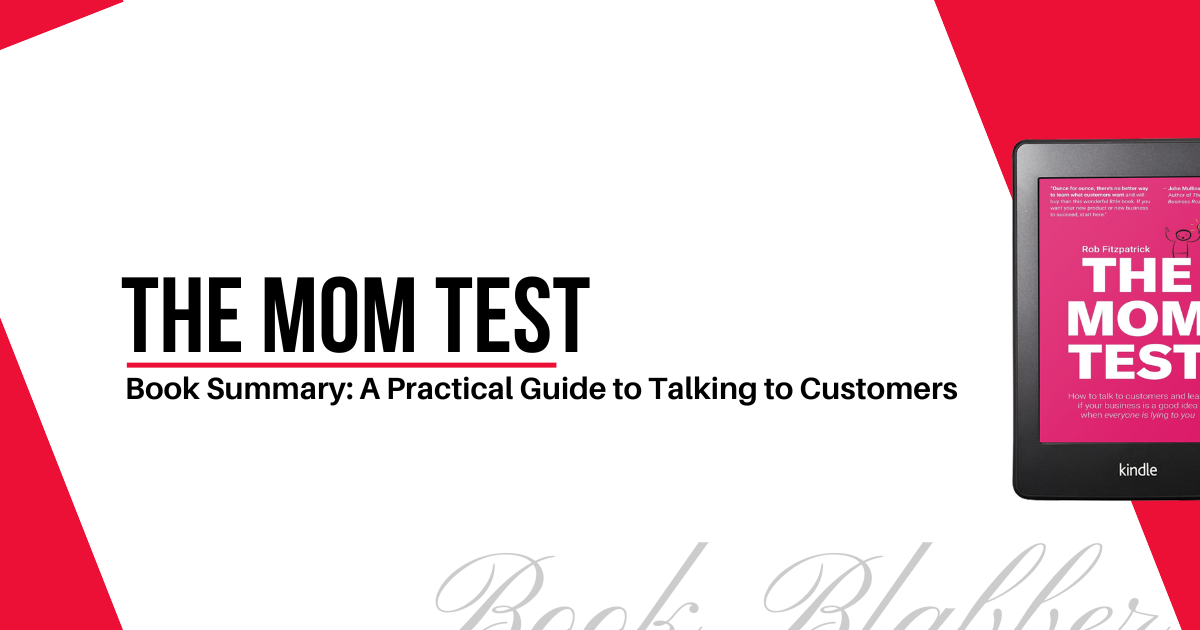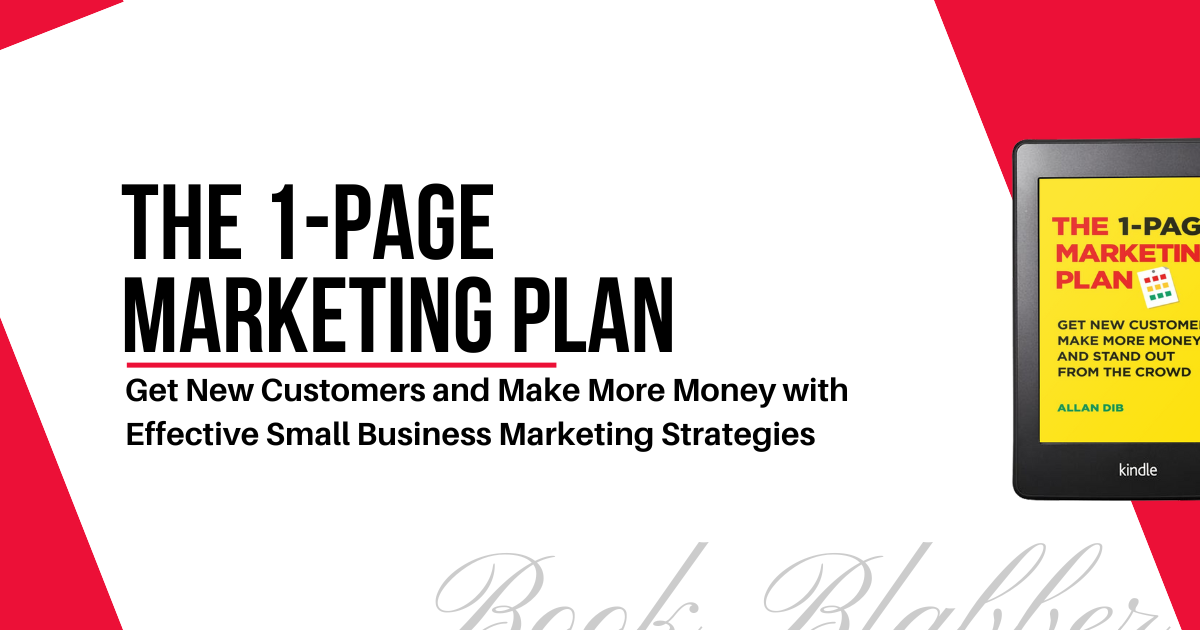The Mom Test Book Summary: A Practical Guide to Talking to Customers

Talking to customers is hard. It always will be. The Mom Test by Rob Fitzpatrick tries to make it a tad bit easier. By laying out the step-by-step process and pointing out the probable traps of failure, Rob Fitzpatrick’s The Mom Test makes it easy to implement the learnings. Check the best quotes from The Mom Test
Rob squeezed the entire customer interview process into this practical handbook of customer conversations. It focuses on the practical approach instead of theories and best practices.
Check The Mom Test on Goodreads
If you're sweating up about the first interview next week, dig your head into this book. It's short and easy to read. You can easily finish this over the weekend.
This article is the summary of The Mom Test book.
Shall we dive in?
Let’s do.
Table of Contents
What is the Mom Test
People say you shouldn’t ask your mom whether your business is a good idea. Your mom will lie to you the most (because she loves you). Also, it’s a bad question and invites everyone to lie to you at least a little.
The Mom Test is a set of simple rules for crafting good idea validating questions.

We find out if people care about what we’re doing by never mentioning it. Instead, we talk about them and their lives. If you avoid mentioning your idea, you automatically start asking better questions.
The Mom Test:
- Talk about their life instead of your idea
- Ask about specifics in the past instead of opinions about the future
- Talk less and listen more
When you do it right, they won’t even know you have an idea.
How to avoid bad data
When it comes to data, be aware of the pitfalls. Bad data gives you false negatives (thinking the idea is dead when it’s not) and – more dangerously – false positives (convincing yourself you’re right when you’re not).

False negatives make you believe an idea is dead when it's not, while false positives convince you that you're right when you're actually not.
So, to stay on track: deflect compliments, anchor fluff, and dig beneath ideas. Compliments may feel good, but they lack substance. What you want are facts and commitments. Ask specific questions to understand why someone liked your idea, how it would benefit them, and what alternatives they have tried.
It’s best to concentrate on executing a single scalable idea rather than chasing every good idea that comes their way. And avoid seeking approval, as it often leads to compliments that can misguide you.
Also, be mindful of being pitchy and demanding compliments. Talk less and listen more.
How to ask important questions
Once we know about The Mom Test, sometimes we over-compensate and ask completely trivial ones. Asking someone how old they are doesn’t move your business forward.
Focus on asking world-rocking scary questions that have the potential to challenge or disprove your current business assumptions. Embrace asking questions that could potentially destroy your imagined business.
Be open to bad news and consider it as a valuable learning opportunity. It's better to discover flaws and dead ends early on than to invest significant time and resources into a failed idea. You’re searching for the truth, not trying to be right.

Prioritize reliable information over empty praise. There’s more reliable information in a “meh!” than a “wow!”
But don't dive into minutiae until you've found a clear understanding of your overall business.
Also, always pre-plan the three most important things you want to learn from each person you engage with. This preparation helps you ask unbiased questions that pass The Mom Test and allows you to face the difficult questions.
Tailor your three questions to each type of person you interact with, whether they are customers. Just focus on selecting the most important questions for your current stage.
How to keep it casual
Separate problem/solution/sales conversations are critical for avoiding bias, but it’s important to realise that the first one doesn’t actually need to be a meeting.
Simplify the process by eliminating unnecessary formality. Learning about a customer and their problems works better as a quick and casual chat than a long, formal meeting.

However, when scheduling formal B2B meetings, consider the actual duration you need. Early conversations tend to be fast and broad, gradually becoming longer as you delve into specific product and industry issues.
And even within formal meetings, aim to keep the atmosphere casual if you want unbiased feedback. Give as little information as possible about your idea while nudging the discussion in a useful direction.

How to commit and advance
Commitment and advancement are separate concepts, which often arrive hand-in-hand. They overlap quite a lot and tend to appear together.
- Commitment: They’re showing they’re serious by giving up something they value such as time, reputation, or money.
- Advancement: They’re moving to the next step of your real-world funnel and getting closer to a sale.
But both are functionally equivalent for our purposes.
Commitment doesn't always have to be monetary; it can take the form of time, reputation, risk, or other valuable currencies. The more someone is willing to give up, the more seriously you can take their positive feedback or kind words.
A successful meeting is one that ends with a commitment to move forward to the next step. If not, it’s pointless.
Look out for customers who display strong emotions and enthusiasm for what you're offering. The more they’re giving up, the more seriously you can take their kind words.

Even if they aren’t enthusiastic, that's still valuable information. Assess if it's significant enough to change your strategy, and then move on to the next opportunity.
How to find conversations
Now that you know how to ask good questions and fix bad meetings, you know enough to have good customer conversations.
But if you don’t already know where do these conversations and meetings come from, you must know the ways:
- Go to them: Make cold calls, seize unexpected moments and find a good excuse to start a conversation. Immerse yourself in places where your target customers are present.
- Bring them to you: Offer something valuable that will make them want to talk to you. Organize meetups, speak and teach at industry events. Also, write about relevant topics to establish yourself as a knowledgeable resource.
- Create warm intros: Seek out industry advisors, explore connections through universities, and engage with investors. Cash in on the relationships to secure warm introductions with others.
Once you meet your customers, ask for and frame the meeting. Clearly define the purpose of the meeting. Avoid defaulting to a sales pitch. Go into discussions in search of advisors, not customers.

Balance your time by ensuring you continue to gain new insights from conversations. Engage with knowledgeable individuals who can provide valuable insights and are genuinely excited about your idea.
How to choose your customers
Startups don’t starve, they drown. And when it comes to making faster progress and avoiding drowning, good customer segmentation is your best friend.
To make faster progress and avoid drowning, effective customer segmentation is crucial for startups.
Focus on serving someone specific. Creating an incredible product for a particular audience is far better than making a mediocre product for multiple audiences. By narrowing down your ideal customer segment, you can filter out noise.
Once you have identified several potential customer segments, decide which one to start with. Avoid solely engaging with senior or important individuals. Instead, look for representatives who provide insights and perspectives that align with your customer base.
You can always expand and broaden your segment later.
How to run the process
If you just show up to meetings and hope for the best, you aren't making a good use of time. You need to do a little bit of work before and after to extract full value.
Prepare for the meeting by determining your list of three important questions in collaboration with your team. If you don’t know what you’re trying to learn, you shouldn’t bother having the conversation.

Use the conversations to uncover answers that the internet cannot provide. Face the scary questions and ensure you know what commitments and next steps to push for.
And limit the number of participants to a maximum of two. Having three interviewers can be overwhelming for the person being interviewed. However, it's important that everyone involved in making significant decisions attends at least some of the meetings.
Whenever possible, write down exact customer quotes. These quotes can be useful while marketing or creating fundraising decks. Yes, the customer (and learning) has to be shared with the entire founding team.

Wrapping It Up
So, that’s all from this Mom Test book summary.
Although The Mom Test book is a practical how-to, customer conversations take time, and are easy to screw up. They can go wrong in unimaginable ways. With the approach and tools given in the book you can set things right.
Liked the article?
Join Book Blabbers WhatsApp group to bond over books, memes and quotes.
Subscribe to Book Blabber's Bulletin to get book summaries, reading tips and occasional hugs in your inbox.







Comments